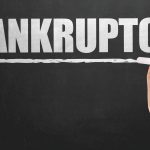You’re a first year grad student, and the thought of repayment doesn’t even cross your mind. “That’s so long from now!” At every semester’s start, you long for the day you stand in the long financial aid line to get the check. The grad school years go by and, in the last year, you go to a mandatory financial aid exit interview. Here, you see unfathomable numbers that you have no idea how to pay back. Entering the real world comes with the reality and hatred of the near thousand dollar payments or more a month; and sometimes, added credit card debt. Have no fear – there are options.
In light of the down economy, if you are unemployed or don’t make enough to comfortably pay back your students loans, Chapter 13 bankruptcy may be an option to provide you with temporary relief – at least for three to five years.
In general, Chapter 13 repayment plans require that all unsecured creditors, including student loan servicing companies, be treated equally. Chapter 13 plan payments are distributed on a pro-rata basis amongst all of your creditors. In a Chapter 13 Bankruptcy, you will repay a portion of your student loan obligations along with your other debts. The twist here is that a Chapter 13 bankruptcy that is filed to deal with student loan obligations does not discharge your entire student loan debt after the completion of your plan payments (unless you qualify for a very rare finding of undue hardship). However, the remaining balance on all of your other unsecured debt is discharged after you complete your Chapter 13 plan obligations. The goal of this strategy is that in three to five years, upon the completion of your Chapter 13 plan, you will be in a better financial position to deal with the remaining balance on your student loan obligations. I call it “growing onto your student loans.”
There is one other option to deal with your student loans in Chapter 13 bankruptcy. In some jurisdictions, by invoking Section 1322(b)(5) of the Bankruptcy Code, you can have your Chapter 13 plan state that the payments on any unsecured debts (such as student loans), whose last payment is due after the last payment under the Chapter 13 plan is due, are to be paid “outside the plan” by making the regular monthly payment directly to the creditor, rather than having the debt be paid through the plan. This sometimes also allows the student loan debt to stay out of default status once the plan is completed. More importantly, it may also result in much more money being paid toward the student loan debt, when compared to the option of having the student loans paid on a pro-rata basis along with your other unsecured debt through the plan. If you consider this option, notice must be given to all creditors and the Chapter 13 trustee, and so long as neither the other unsecured creditors of the Chapter 13 trustee object to this strategy, you may end up ahead at the end of your plan.
One important note about student loan obligations in bankruptcy – interest will still accrue on your student loans during the plan period. Despite this one negative, filing for Chapter 13 bankruptcy to deal with student loans may be a good option if your have used all available deferments and your monthly student loan payments are too high to handle in the short term.
Brittni T. Feldenkeis, Esq. contributed to this post.
